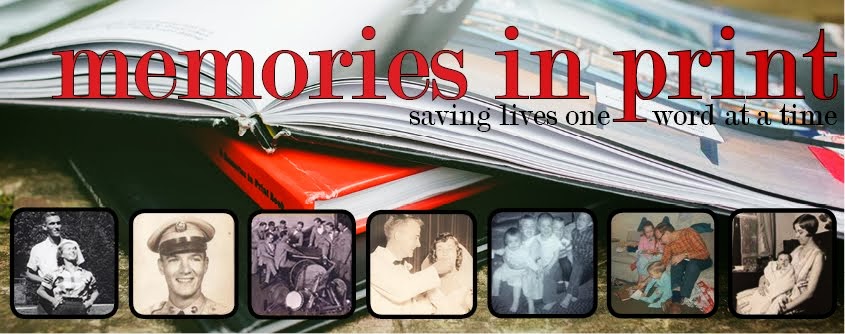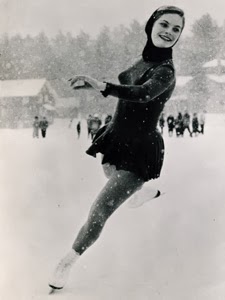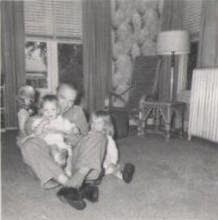Interviewing is a skill that varies from person to person, with factors ranging from personality, history, health, circumstance, and more. This series of posts about successful interview techniques shares solutions to common problems encountered while interviewing individuals for their personal and family stories.
Interviewees come in various levels of talkativity. On one end of the spectrum, there's the stoic Man of Few Words; on the other end is the Babbling Brook, who just keeps talking forever about anything. Babbling Brooks are the kind of people that, before you know it, it's been thirty minutes since your last question and somehow you're listening to a detailed account of a steak dinner twenty years ago (true story - that happened to me) when your last question was "Tell me about your wedding day". You don't need to feel overwhelmed by the torrent - you just need to follow three simple guidelines to dam and guide the flow.
Interviewees come in various levels of talkativity. On one end of the spectrum, there's the stoic Man of Few Words; on the other end is the Babbling Brook, who just keeps talking forever about anything. Babbling Brooks are the kind of people that, before you know it, it's been thirty minutes since your last question and somehow you're listening to a detailed account of a steak dinner twenty years ago (true story - that happened to me) when your last question was "Tell me about your wedding day". You don't need to feel overwhelmed by the torrent - you just need to follow three simple guidelines to dam and guide the flow.
 |
| Babbling Brook types love to tell stories - the trick is hearing the stories you want to learn more about (Digital artwork by criminalatt) |
My grandmother Liz was an energetic force to be reckoned with; because of her strong personality, it's not surprising that most of my memories of my grandparents are of my grandmother talking (often over others) and my grandfather sitting quietly on the sidelines. After my grandmother passed away, I sat down to interview my grandfather and was shocked to find him in the Babbling Brook category. I guess he didn't get much chance to talk when I was growing up, and now, with a recorder in front of him, he wouldn't stop talking long enough for me to take a bathroom break.
As the hours passed (he talked for NINE HOURS), I realized that I was hearing a lot about his career and very little about his marriage and the raising of his family, the latter being topics I was more interested in. So I had to figure out how to turn the flow of memories from work to family. The following three strategies that I developed that day have continued to help me in my work with other Babbling Brook-type clients as well.
I know, sounds rude and risky, but sometimes it's the only way to redirect the conversation. Babbling Brooks usually have such a volume of word flow that there are no breaks for you to naturally cut in. With a smile and a warm tone, simply break in by saying something like, "I love hearing these stories about your career, and I'd like to hear more about your years as a teacher, but we haven't talked much about your wedding and I'd really like to hear more stories about that." In that way, you affirm the value of the stories he obviously likes to tell, while still redirecting him to a story you want to hear. Sometimes they'll insist on finishing the story they were telling, so agree with a laugh and bargain lightly with them: "OK, but after this story I want to hear more about your wedding day." Odds are good that he'll try and tell another career story anyways, but if you playfully remind him (possibly mid-sentence again), "Hey - we had a deal!" he'll probably honor the bargain and share a story or two about his wedding. (A good thing to keep in mind is that interrupting them carries surprisingly little risk. Babbling Brooks are so happy to have attention and a listening ear that often it almost doesn't matter to them what story they're telling; it's a compliment to them that you're interested enough to request a specific story or detail.)
(2) Persistently Ask Specific Questions
Every person has a set of stories compiled over the years of their life, some of them sweet and some of them painful. Some stories are more difficult to share than others, and when you're seeking out someone else's painful stories it can be nearly impossible to draw them out. In the case of my grandfather, he had a happy childhood and a successful career, but his marriage was difficult. He was a Babbling Brook when it came to childhood games and the students he caught cheating, but questions about my grandmother were met with a gruff two-sentence answer before he went back to childhood stories. I did not want our time to turn into an uncomfortable interrogation, but I also really wanted more information about my grandmother, so I had to adapt. In order to learn more about his marriage, I had to be patient, persistent and very specific. Between stories that made him happy, I would ask short specific questions: "Where did you and Liz go on your honeymoon?" "What was the name of the church you were married in?" "Why did you pick the name 'Diann' for your first child?" It worked: while he would not talk in length about his marriage, he would faithfully give me one or two-sentence answers when I asked specific questions, and even remained in a good mood. Sometimes I could even press him with a couple questions in a row before he changed the subject; each time, I would tactically retreat for a couple stories, and then press him again with another question a few minutes later. Because of the painful nature of these memories, the stories and details I wanted to learn involved much more intentional effort to glean, but it was more than worth it. So don't give up when a certain topic seems closed: some stories are just harder to learn about than others, and gentle persistence can go a long way toward opening a closed door.
(3) Use Photos Related to What you Want to Know
Photos are far and away my favorite interview tool, and for Babbling Brook types they offer the perfect assistance for redirection. Almost everyone has a photo album, scrapbook or shoe box full of sentimental photos, and if you have that spread across your lap or opened on the coffee table it becomes a powerful and natural segue into a more desirable topic. Page through it while they're telling stories, pick a picture that relates to a time of their life you want to learn more about, and use it to redirect them when necessary. Since Babbling Brook types often need interrupted, as discussed earlier, I often soften the break-in with a compliment: "Look how beautiful you are in your wedding dress!" or "Your boys were so CUTE! Look at this picture!" It's usually more than enough to redirect their attention to the photo, and give you a chance to ask, "So, you got married in July - was it hot that day?" or "Your boys were only eleven months apart - was that planned?" You also gain the added benefit of the photo's memory assistance, which is often enormously helpful.
Want to learn more about successful interviewing techniques? Follow Memories in Print on Facebook, Twitter or Google+ to keep up to date on upcoming interview posts, such as how to draw out a man of few words, creative strategies for interviewing subjects with memory issues, and more.
Want to learn more about successful interviewing techniques? Follow Memories in Print on Facebook, Twitter or Google+ to keep up to date on upcoming interview posts, such as how to draw out a man of few words, creative strategies for interviewing subjects with memory issues, and more.



























